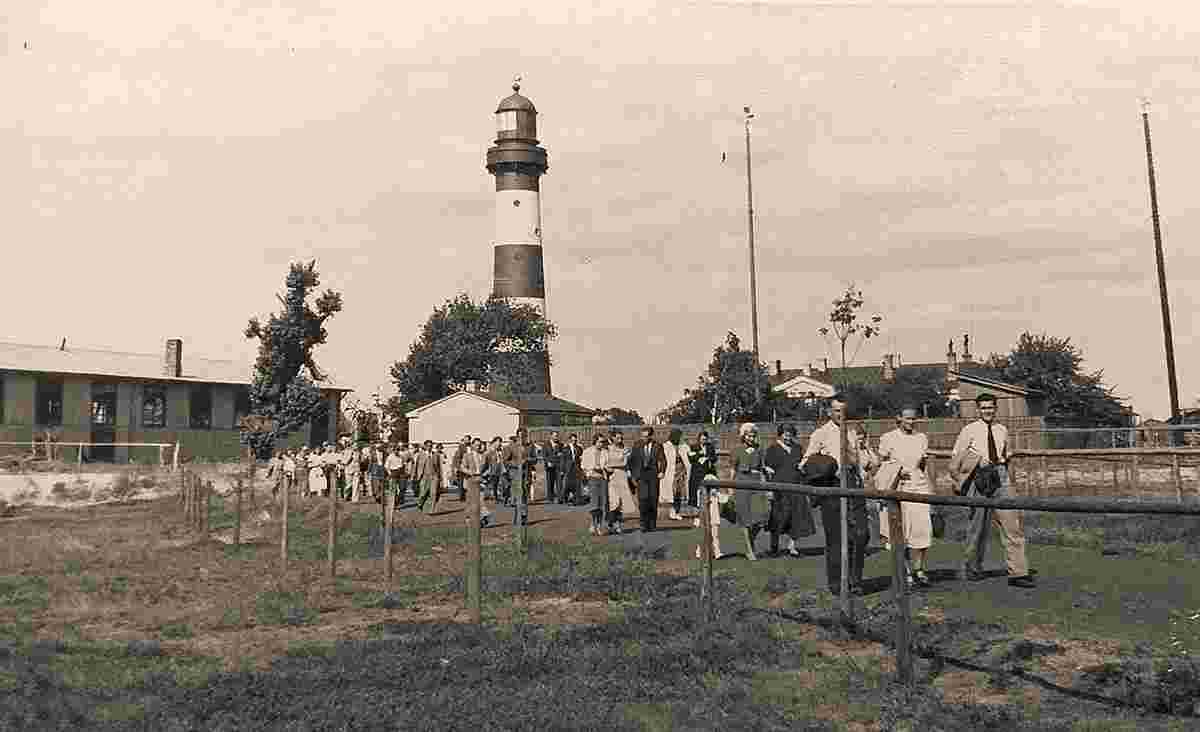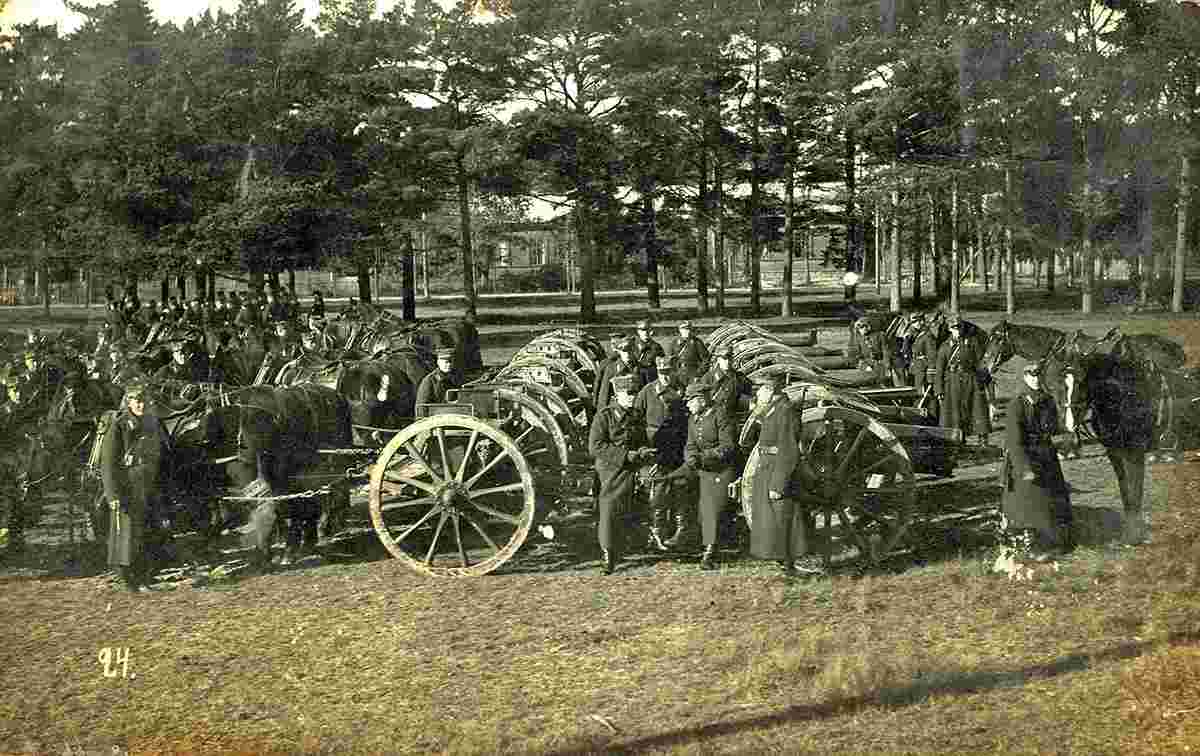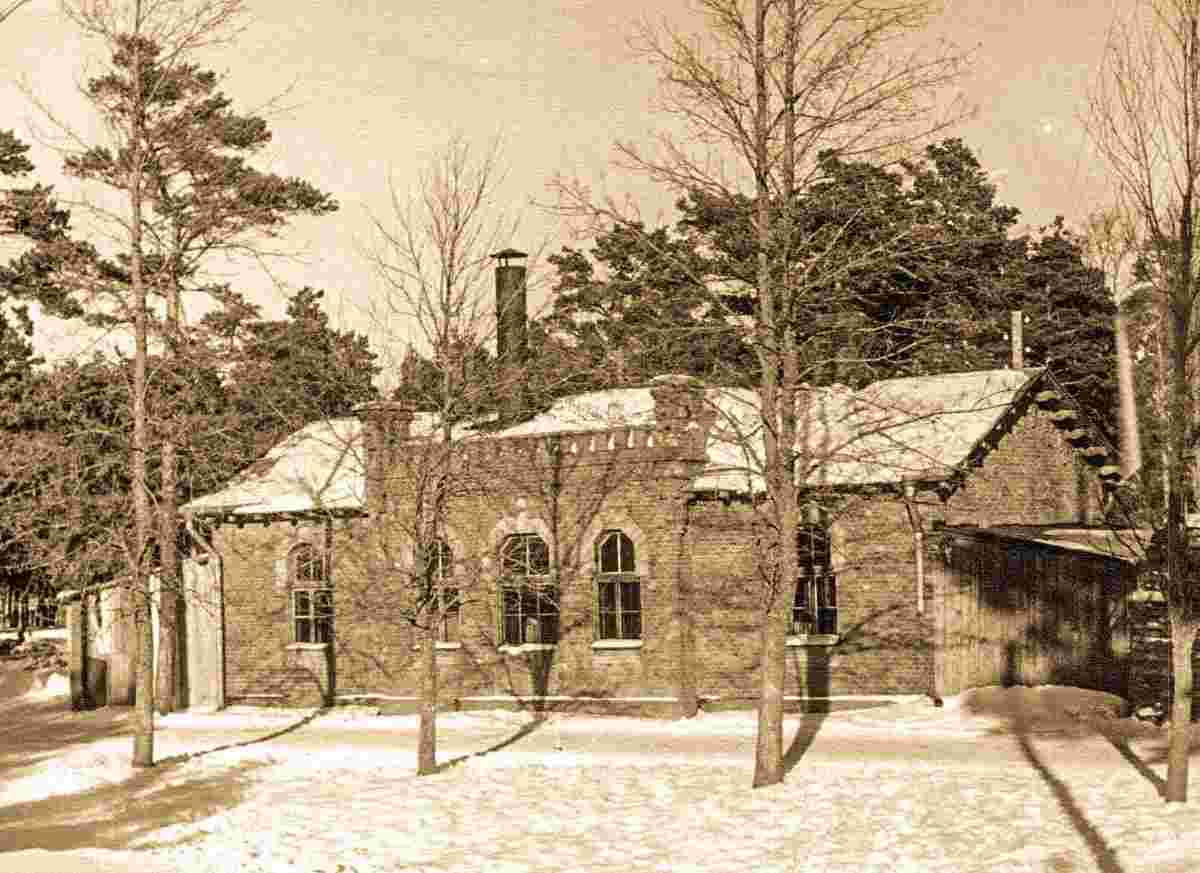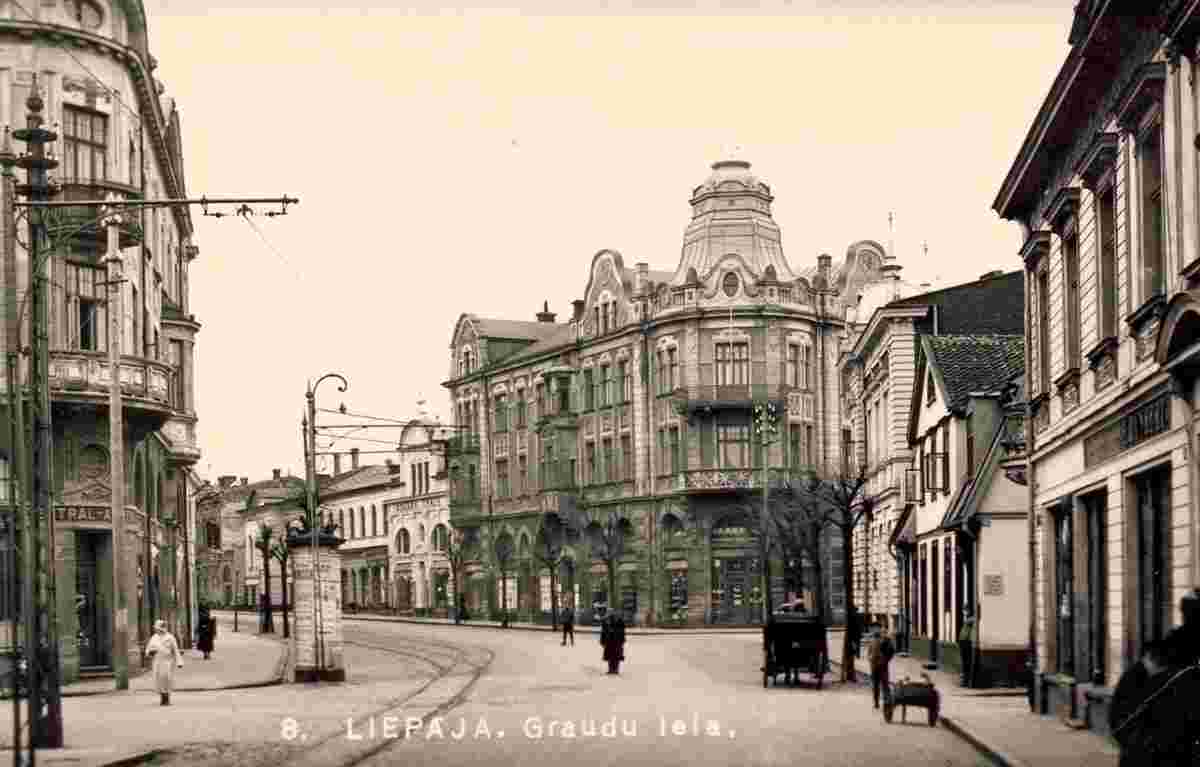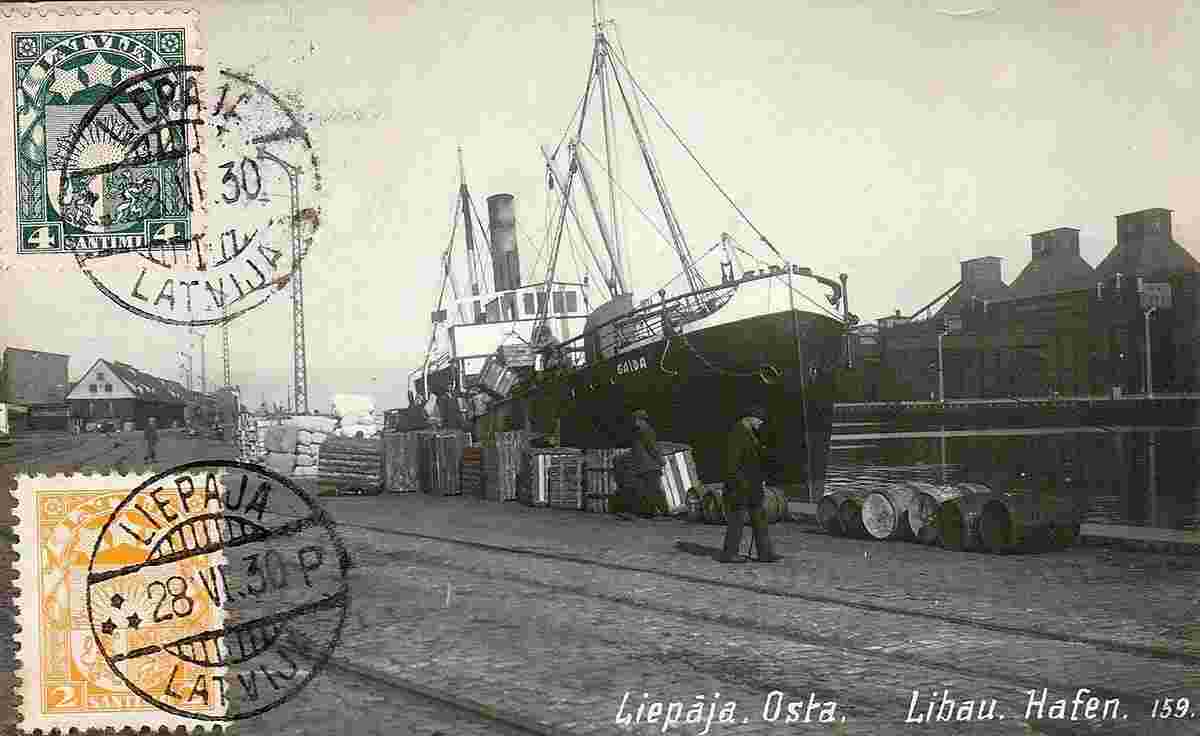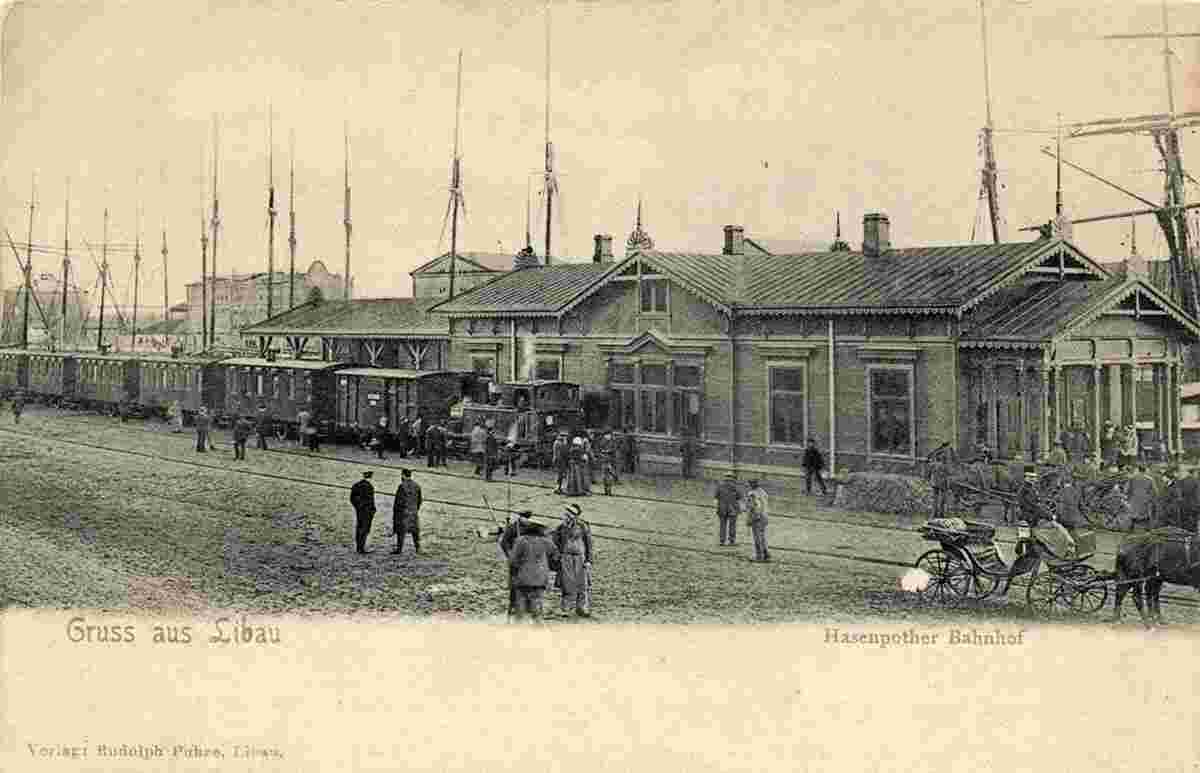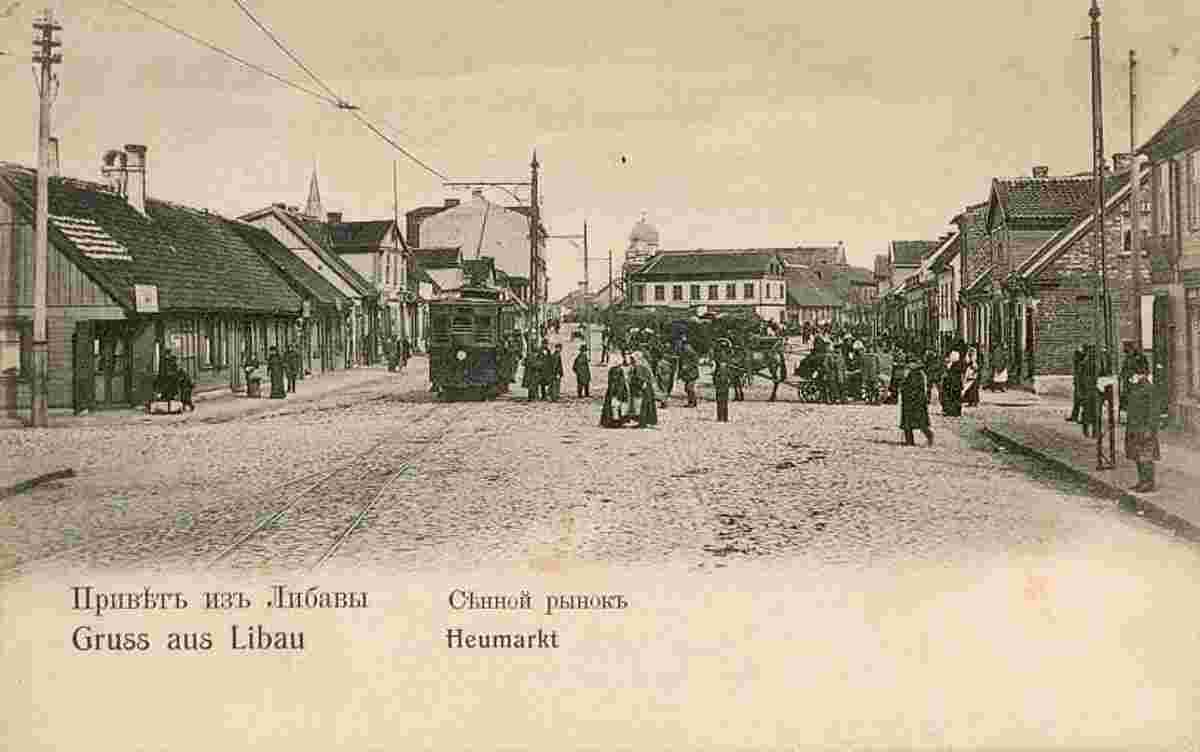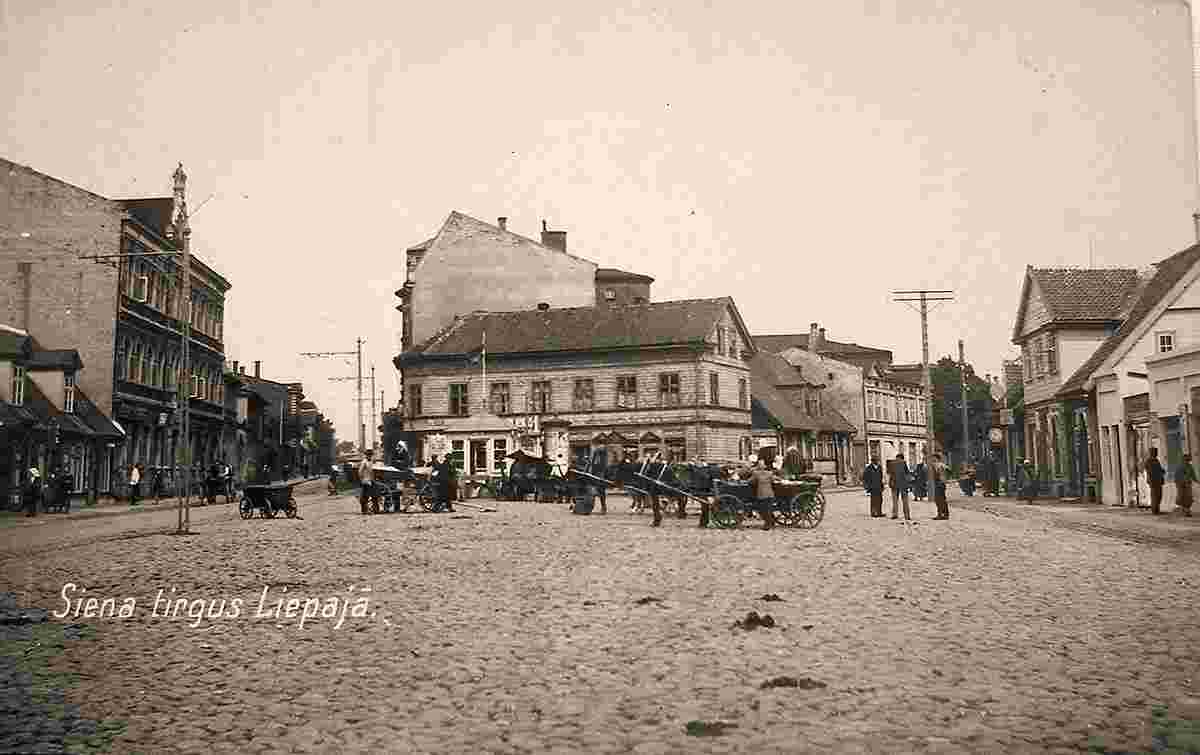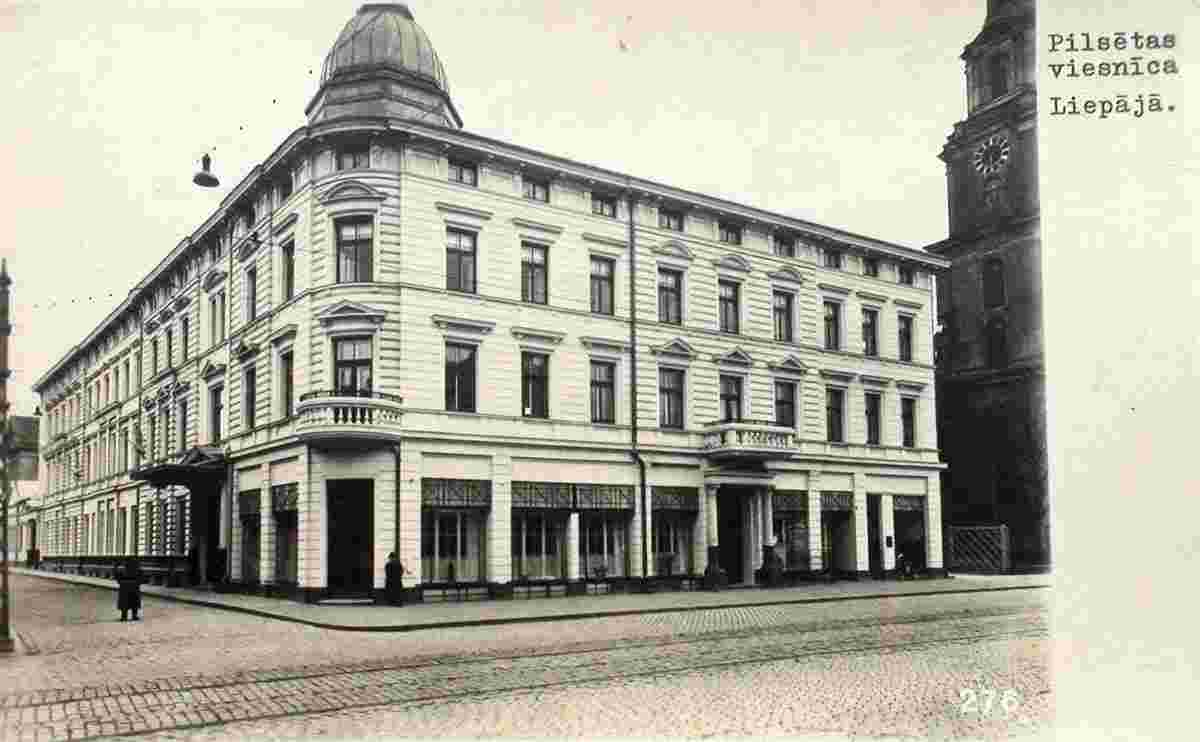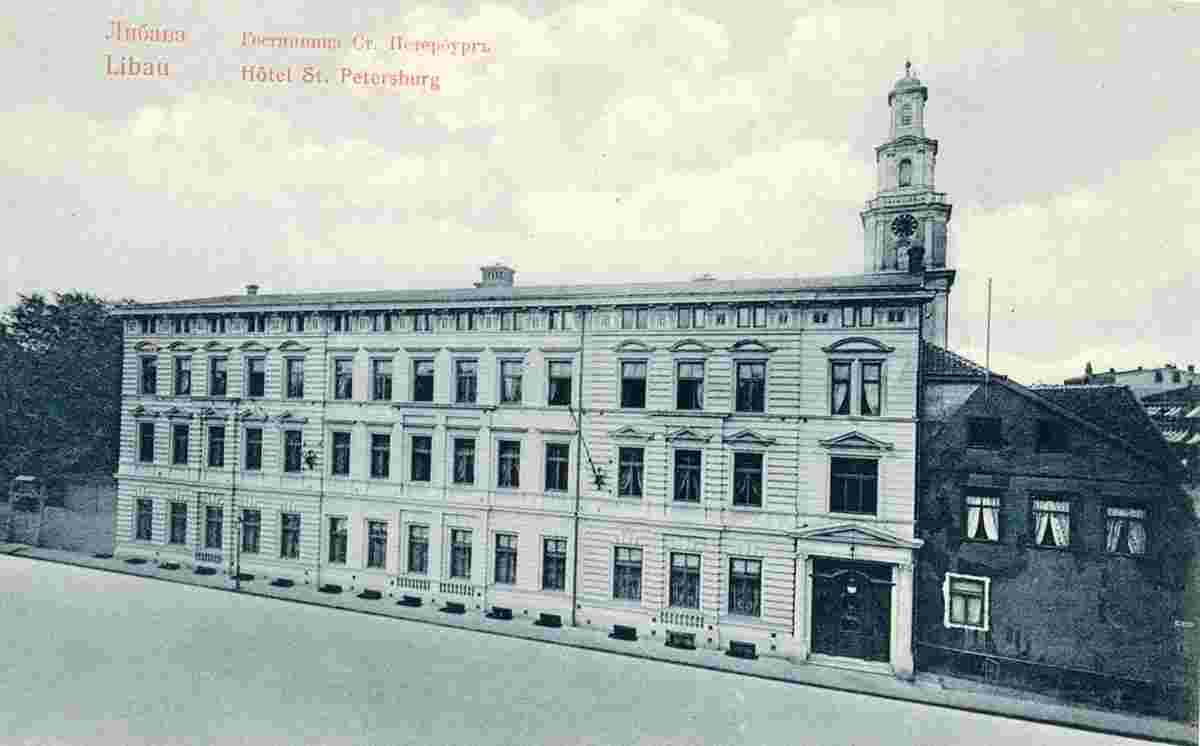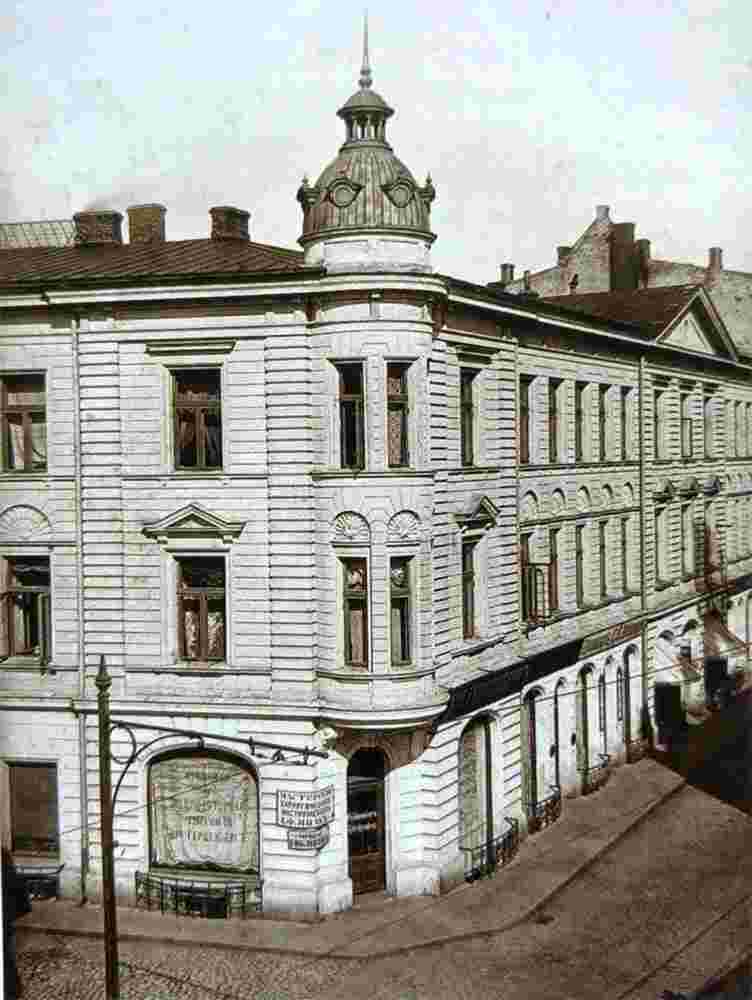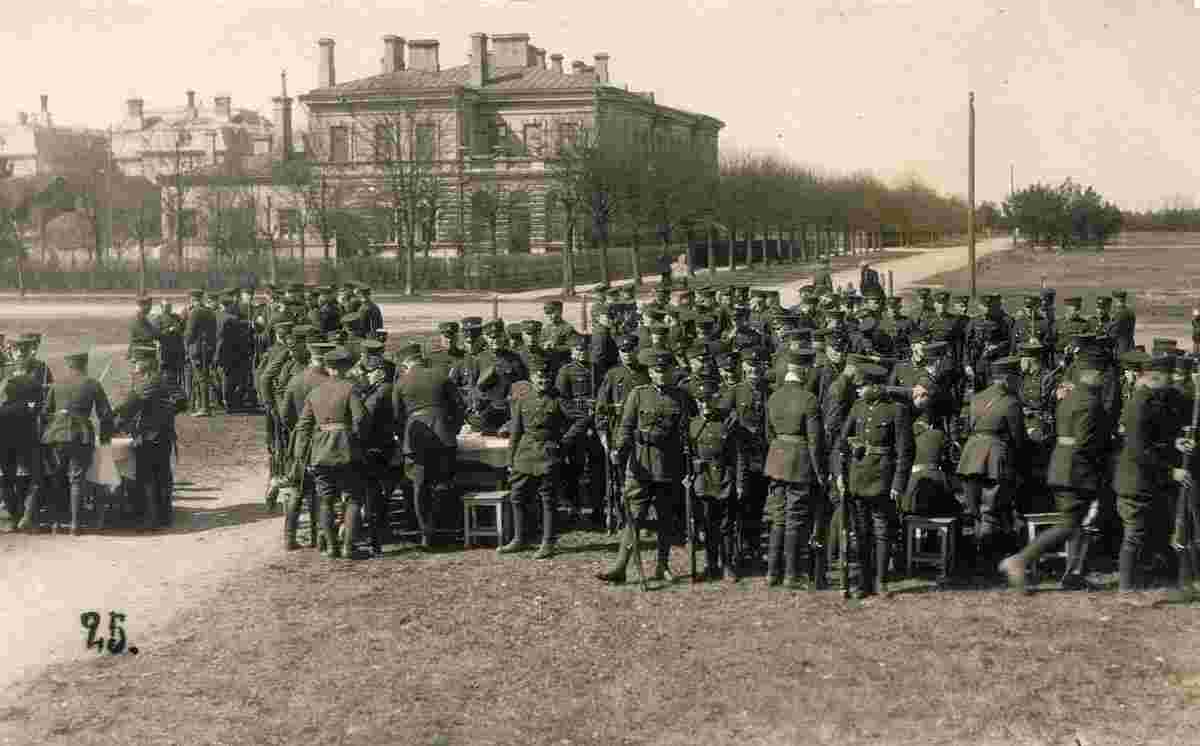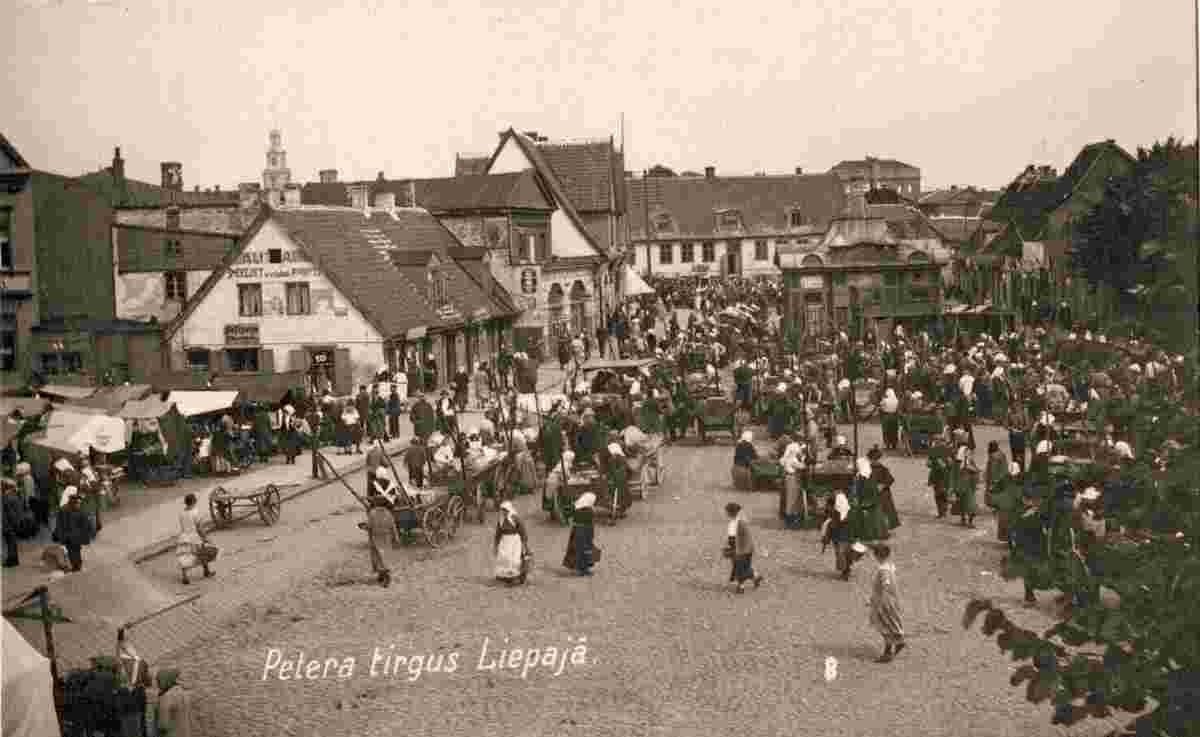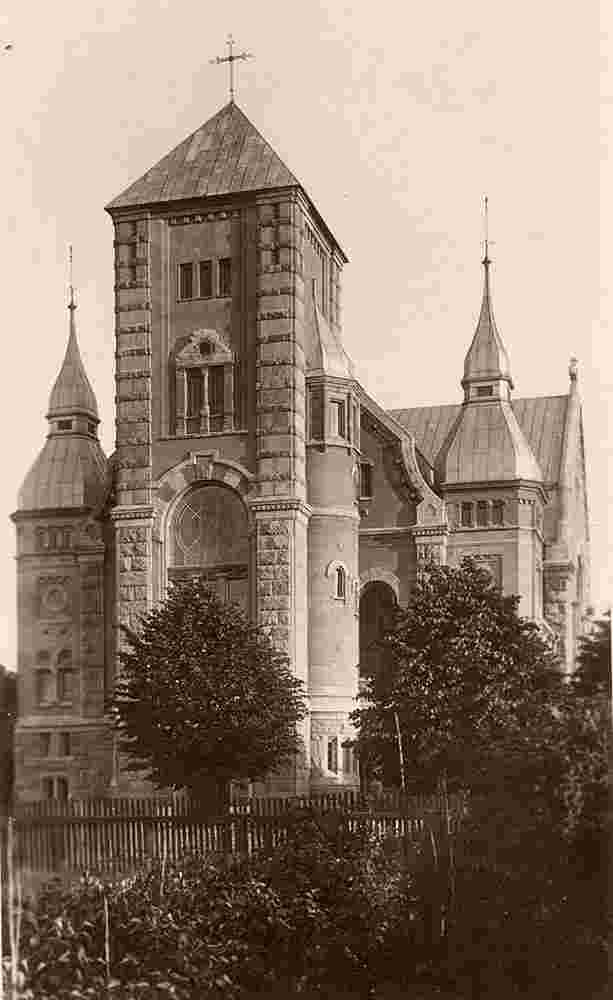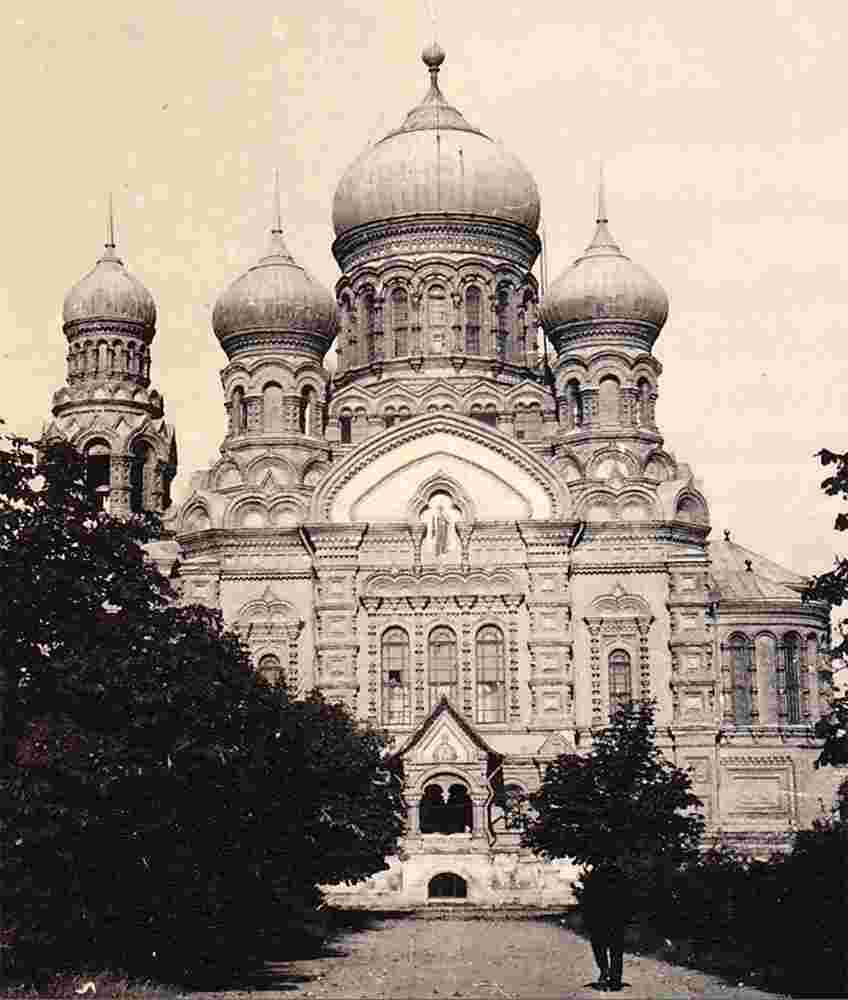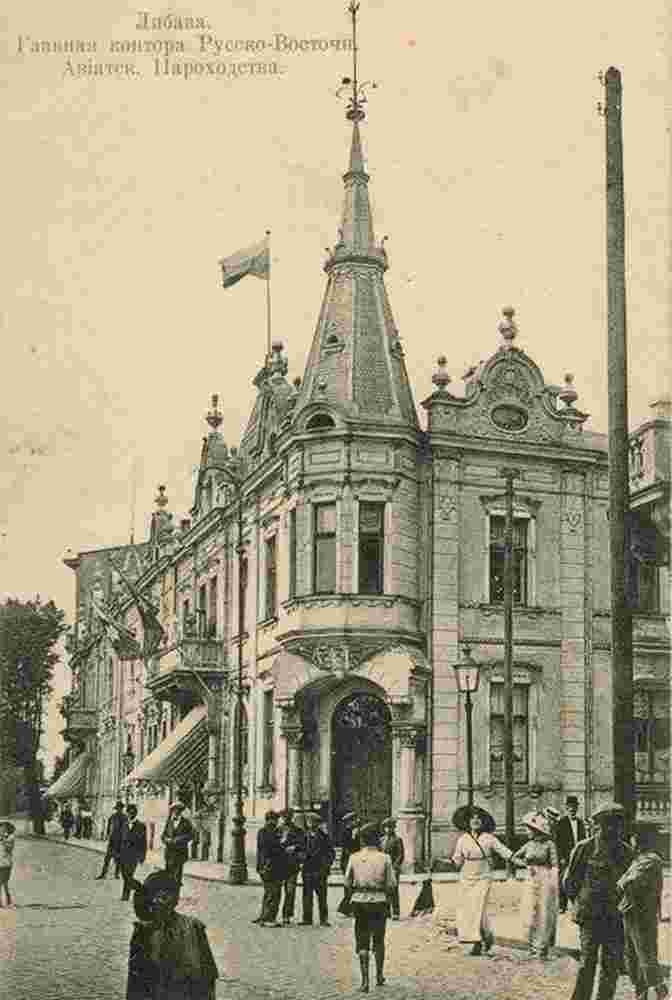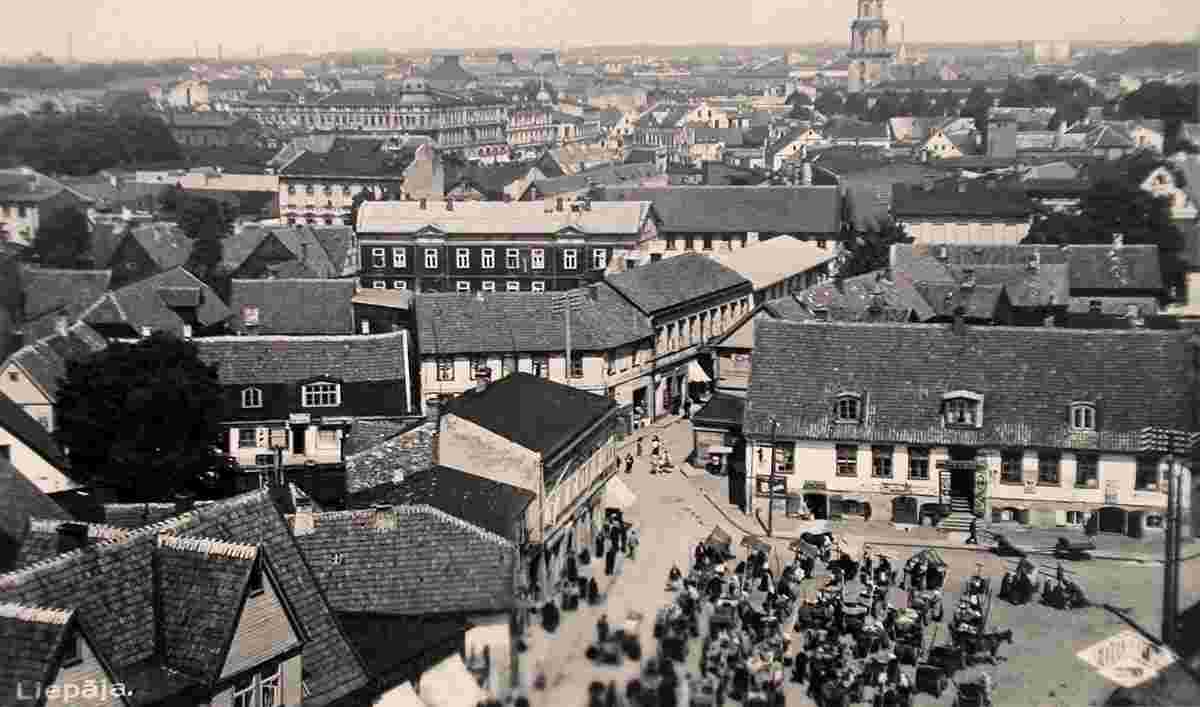Historical and old photos of Liepaja (german - Libau)
HistoryEarly historyIt is said that the original settlement at the location of modern Liepāja was founded by Curonian fishermen from Piemare as Līva, but Henry (Henricus Lettus) of Livonia, in his famous Chronicle, makes no mention of the settlement. The Teutonic Order established a town which they called Libau here in 1263, followed by Mitau two years later. In 1418 the village was sacked and burned by the Lithuanians. Livonian confederationDuring the 15th century, a part of the trade route from Amsterdam to Moscow passed through Līva, where it was known as the "white road to Lyva portus". By 1520 the river Līva had become too shallow for easy navigation, and development of the city declined. Duchy of Courland and SemigalliaIn 1560, Gotthard Kettler loaned all the Grobiņa district, including Libau, to Albert, Duke of Prussia for 50,000 guldens. Only in 1609 after the marriage of Sofie Hohenzollern, Princess of Prussia, to Wilhelm Kettler did the territory return to the Duchy. During the Livonian War, Libau was attacked and burnt by the Swedes. In 1625, Duke Friedrich Kettler of Courland granted the town city rights, which were affirmed by King Sigismund III of Poland in 1626, although under what legal authority Sigismund had is debatable. Under Duke Jacob Kettler (1642–1681), Libau became one of the main ports of Courland as it reached the height of its prosperity. In 1637 Couronian colonization was started from the ports of Libau and Ventspils (Windau). Kettler was an eager proponent of mercantilist ideas. Metalworking and ship building became much more developed, and trading relations developed not only with nearby countries, but also with Britain, France, the Netherlands and Portugal. In 1697–1703 a canal was cut to the sea and a more modern port was built. In 1701, during the Great Northern War, Libau was captured by Charles XII of Sweden, but by the end of the war, the city had returned to titular Polish possession. In 1710 an epidemic of plague killed about a third of the population. In 1780 the first Freemasonry lodge, "Libanons," was established by Provincial Grand Master Ivan Yelagin on behalf of the Provincial Lodge of Russia; it was registered as number 524 in the Grand Lodge of England. Russian EmpireCourland passed to the control of the Russian Empire in 1795 during the third Partition of Poland and was organized as the Courland Governorate of Russia. Growth during the nineteenth century was rapid. During the Crimean War, when the British Royal Navy was blockading Russian Baltic ports, the busy yet still unfortified port of Libau was briefly captured on 17 May 1854 without a shot being fired, by a landing party of 110 men from HMS Conflict and HMS Amphion. In 1857 an Imperial Decree provided for a new railway to Libau, and the same year the engineer Jan Heidatel developed a project to reconstruct the port. In 1861–1868 the project was realized – including the building of a lighthouse and breakwaters. Between 1877–1882 the political and literary weekly newspaper Liepājas Pastnieks was published – the first Latvian language newspaper in Libau. In the 1870s the further rapid development of Russian railways, especially the 1871 opening of the Libava-Kaunas and the 1876 Liepāja–Romny Railways, ensured that a large proportion of central Russian trade passed through Libau. By 1900, 7% of Russian exports were passing through Libau. The city became a major port of the Russian Empire on the Baltic Sea, as well as a popular resort. On the orders of Alexander III, Libau was fortified against possible German attacks. Fortifications were subsequently built around the city, and in the early 20th century, a major military base was established on the northern edge. It included formidable coastal fortifications and extensive quarters for military personnel. As part of the military development, a separate port was excavated for exclusively military use. This area became known as Kara Osta (War Port) and served military needs throughout the twentieth century. Early in the twentieth century, the port of Libau became a central point of embarkation for immigrants traveling to the United States and Canada. By 1906 the direct ship service to the United States was used by 40,000 migrants per year. Simultaneously, the first Russian training school of submarine navigation was founded. In 1912 one of the first water aerodromes in Russia was opened in Libau. In 1913, 1,738 ships entered Libau, with 1,548,119 tonnes of cargo passing through the port. The population had increased from 10,000 to over 100,000 within about 60 years. World War I and War of IndependenceFollowing the outbreak of World War I, the German cruiser SMS Magdeburg shelled Libau, and other vessels laid mines off the approaches to the port. Libau was soon occupied by the German Army, on 7 May 1915, and in memory of this event, a monument was constructed on Kūrmājas Prospect in 1916 (destroyed by Bolsheviks in 1919). Libau's local government issued its own money for a while in this period – Libaua rubles. An advanced German Zeppelin base was constructed at Vaiņode, near Liepāja, with five hangars, in August 1915. On 23 October 1915, the German cruiser SMS Prinz Adalbert was sunk by the British submarine HMS E8, 37 km (23 mi) west of Libau. With the collapse of Russia and the signing of the Treaty of Brest-Litovsk, the occupying German forces had a quiet, time but the subsequent collapse of the German Empire and the Allied denunciation of the Brest-Litovsk Treaty changed everything. Independence of the Republic of Latvia was proclaimed on November 18, 1918, and the Latvian Provisional Government under Karlis Ulmanis was created. Bolshevik Russia now advanced into Latvian territory and met little resistance here. Soon the Provisional Government and remaining German units were forced to leave Riga and retreated all the way to Liepāja, but then the Red offensive stalled along the Venta river. A Latvian Soviet Republic was announced. Latvia now became the main theatre of Baltic operations for the remaining German forces in 1919. In addition, a Landeswehr was formed to work in conjunction with the German forces. In Liepāja, a coup organized by Germans took place on 16 April 1919 and Ulmanis government was forced to flee and was replaced by Andrievs Niedra. The Ulmanis government found shelter on the steamship "Saratov" in Liepāja port. In May a British cruiser squadron arrived at Libau to support Latvian independence and requested the Germans to leave. During the war, the words of "The Jäger March" were written in Libau by Heikki Nurmio. The German Freikorps, having recaptured Riga from the Bolsheviks, departed in late 1919 and, with some Polish assistance, the Bolsheviks were driven out of the Latvian hinterlands in early 1920. 1920–1940During the interwar period Liepāja was the second major city in Latvia. In an attempt to put Libau 'on the map', on 31 January 1922 the Libau Bank was founded with significant new capital, transforming the old Libau Exchange Bank which had belonged to the Libau Exchange Association, and it eventually became the fourth largest of Latvia's joint stock banks. However, when a Riga branch of the bank was opened, the business centre of gravity shifted from Liepāja so that by 1923 its Riga 'branch' was responsible for 90% of the turnover. The German consul in Liepāja reported at the time that "Riga, the economic heart of the country, draws all business to itself." The Latvian government ignored the pleas of the Libau Exchange Association to frustrate this. In 1935 KOD (Latvian: Kara ostas darbnīcas) started to manufacture the light aircraft KOD-1 and KOD-2 at Liepāja. However it became evident in this year that trade with the new Soviet Union had virtually collapsed. World War IIThe ports and human capital of Liepāja and Ventspils were targets of Joseph Stalin. He signed the Molotov–Ribbentrop pact in part to gain control of this territory. When the Soviet Union occupied and annexed Latvia in 1940, it nationalized private property. Many thousands of former owners were arrested and deported to the gulag camps in Siberia. In 1941 Liepāja was among the first cities captured by the 291st Infantry Division of Army Group North after Nazi Germany began Operation Barbarossa, its war against the Soviet Union. German Nazis and Latvian collaborators virtually exterminated the local Jewish population, which had numbered about 7,000 before the war. Film footage of an Einsatzgruppen execution of local Jews was taken in Liepāja. Most of these mass murders took place in the dunes of Šķēde north of the city. Fewer than thirty Jews survived in Liepāja by the end of the war. During the period 1944–1945, as the Soviet Union began its offensive to the Baltic Sea, Liepāja was within the "Courland Pocket". It was occupied by the Red Army on 9 May 1945. Thousands of Latvians fled as refugees to Germany. The city had been devastated during the war, and most of the buildings and industrial plant were destroyed. Latvian SSROn 25–29 March 1949, the Soviet Union organized a second mass deportation to Siberia from Liepāja. In 1950 a monument to Stalin was erected on Station square (Latvian: Stacijas laukums). It was dismantled in 1958 after the Party Congress that discussed his abuses. During 1953–1957 the city center was reconstructed under the direction of architects A. Kruglov and M. Žagare. In 1952–1955 the Liepāja Academy of Pedagogy building was constructed under the direction of A. Aivars. In 1960 the Kurzeme shopping centre was opened. During the Soviet administration, Liepāja was a closed city; even local farmers and villagers needed a special permit to enter it. The Soviet military set up its Baltic naval base and nuclear weapon warehouses there; The Beberliņš sandpit was dug out to extract sand used for constructing underground warehouses. In 1967 the Soviets completely closed the port to commercial traffic. One third of the city was taken up with a Soviet naval base; its military staff numbered 26,000. The 14th Submarine Squadron of the USSR's Baltic Fleet (Russian: 14 эскадрилья ЛиВМБ ДКБФ, call sign "Комплекс") was stationed there with 16 submarines (Types: 613, 629a, 651); as was the 6th group of Rear Supply of the Baltic Fleet, and the 81st Design Bureau and Reserve Command Center of the same force. In 1977 Liepāja was awarded the Order of the October Revolution for heroic defense against Nazi Germany in 1941. Five residents were awarded the honorary title Hero of Socialist Labor: Anatolijs Filatkins, Artūrs Fridrihsons, Voldemārs Lazdups, Valentins Šuvajevs and Otīlija Žagata. Because of the rapid growth of the city's population, a shortage of apartment houses resulted. To resolve this, the Soviet government organized development of most of the modern Liepāja districts: Dienvidrietumi, Ezerkrasts, Ziemeļu priekšpilsēta, Zaļā birze and Tosmare. The majority of these blocks were constructed of ferro-concrete panels in standard projects designed by the state Latgyprogorstroy Institute (Russian: Латгипрогорстрой). In 1986 the new central city hospital in Zaļa birze was opened. 1990 – presentAfter Latvia regained independence after the fall of the Soviet Union, Liepāja has worked hard to change from a military city into a modern port city (again appearing on European maps after the secrecy of the Soviet period). The commercial port was re-opened in 1991, and in 1994 the last Russian troops left Liepāja. Since then, Liepāja has engaged in international co-operation, has been associated with 10 twin and partner cities, and is an active partner in several co-operation networks. Facilities are being improved. The city is the location of Latvia's largest naval flotilla, the largest warehouses of ammunition and weapons in the Baltic states, and the main supply centre of the Latvian army. The former closed military town has been transformed into the northern neighbourhood of Karosta, occupying a third of the area of the city of Liepāja and attracting tourists to the remaints of the military era. At the beginning of the 21st century, many ambitious construction projects were planned for the city, including a NATO military base, and Baltic Sea Park, planned as the biggest amusement park in the Baltic states. Most of the projects have not yet been realised due to economic and political factors. Liepāja's heating network was renovated with the cooperation of French and Russian companies: Dalkia and Gazprom, respectively. In 2006, Queen Beatrix of the Netherlands, a direct descendant of Jacob Kettler visited Liepāja. In 2010 the coal cogeneration 400 MW power plant was built in Liepāja with the support of the government. Origin: en.wikipedia.org | ||||||||||||
 |
Historical and old photos of Liepaja (german - Libau)
Liepājas vēsturiskās un senās fotogrāfijas (vāciski - Libau) |
| Main page • Countries of Europa • Cities of Latvia |
| Robinson Rd, CB 13862 Nassau, NP, The Bahamas |
 •
• 

